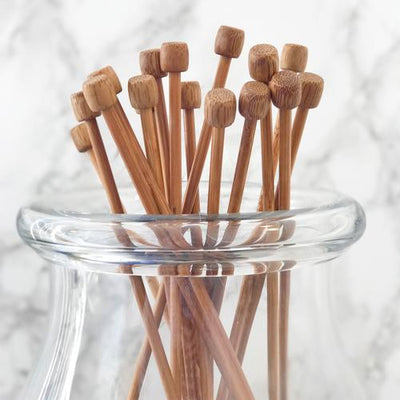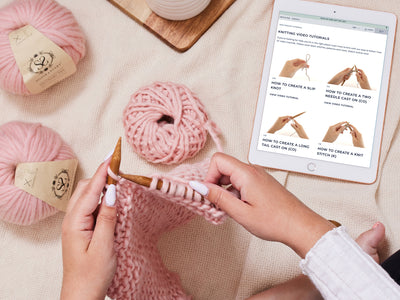
How To Wash Your Projects
3 min read time
Keep your lovingly-made garments and accessories looking fresh with our handy How-To guide.
Whether you have done the work yourself or received one as a gift, taking proper care of handmade knit and crochet projects will keep them looking their best for years to come.
How to care for wool items
Wool is naturally antibacterial and stain resistant, which means it has the advantage of not needing to be washed too often. Simply airing your garment out between wears, and treating small stains by spot cleaning the soiled area with mild detergent, can be sufficient for many items. Of course, there are times when an item made from wool just has to be washed, especially Stitch & Story’s baby and kids collection.
Washing
When washing any knitted or crochet item you should always refer to the yarn band for fibre content information and care instructions. On Stitch & Story’s yarn bands you’ll see symbols and instructions that indicate hand-wash only. Our recommendation is to always wash yarns by hand in order to keep your knit and crochet items looking better for longer.

For example, Stitch & Story’s Chunky Wool is roving and therefore should only ever be washed by hand, as it is likely to felt in a washing machine. The Lil’ Merino however, can be washed on a cold (20ºC), delicate or wool machine cycle with little to no spin.**
Top Tip - To protect your items, turn them inside out or put them in a wash bag before placing them in the washing machine.
** Please note all washing machines differ. Stitch & Story cannot be held responsible for items damaged by washing in a machine.
Detergent
When choosing a detergent for washing your wool items, look for a mild laundry liquid specifically designed for delicate and wool fibres, ideally displaying the Woolmark symbol. Avoid powder detergents (the powder is unlikely to dissolve in cool water and will stick to the wool fibres) and capsules (the soluble packaging can damage the wool).
Some of the detergents we like are: Ecover’s Delicate Laundry Liquid, Eucalan Delicate Wash or Soak, the rinse-free laundry soap.

Top Tip - If machine washing, be sure to place detergent in the dispenser drawer as opposed to in a detergent cup you place in the drum. A cup can cause unwanted friction during the wash cycle and damage your items.
Avoid using fabric softener! Although it may seem like using fabric softener will make your items even softer, it will actually stick to and coat the fabric’s fibres, affecting its natural properties and damaging your item.
Step by step guide to handwashing
Hand-washing may seem like a lot of effort, but if you consider the time and effort you put into making your project, taking a little time to properly care for it is worth it.
-
Use a sink, bathtub, or a plastic container large enough to completely submerge the item you're washing, and fill with cool water.
-
Follow the instructions on your detergent’s packaging for how much to add. For small stains, you can spot clean by gently dabbing the soiled area with detergent to remove it.
-
Soak or gently rub your item in the soapy water but never scrub, twist or wring it.
-
Drain off the water and rinse with fresh, cold water. Keep draining and adding water until it runs clear and is soap free.
-
Gently squeeze out as much water as you can without wringing or twisting. Avoid lifting and letting the item hang, as the weight of the water will stretch it out.
-
Lay your item flat on a dry towel and roll it up, pressing firmly as you roll, so that the towel absorbs most of the water.

How to reshape and dry your project
-
Lay a dry towel on a flat surface with good air circulation (like a drying rack).
-
Place the item on the towel, reshaping as you go, gently patting it into shape. Avoid excessive pulling or stretching.
-
Allow the item to dry for at least 12 hours and then turn it over to allow the other side to fully dry.
-
If not completely dry after 24 hours then put a new dry towel underneath, turn and reshape the item again.
Top Tip - For large items, such as blankets, moving the item around more frequently will ensure the weight of the wet fibres doesn’t pull it out of shape.
Other tips for garment care
Always store your garments flat or folded. Hanging them will cause the fibres to stretch and the item to go out of shape.
Over time you'll find that wool items, particularly those made with The Chunky Wool, can pill due to friction. To remove these balls of fluff and keep your item looking new, you can use a pilling comb or clothes shaver.
















